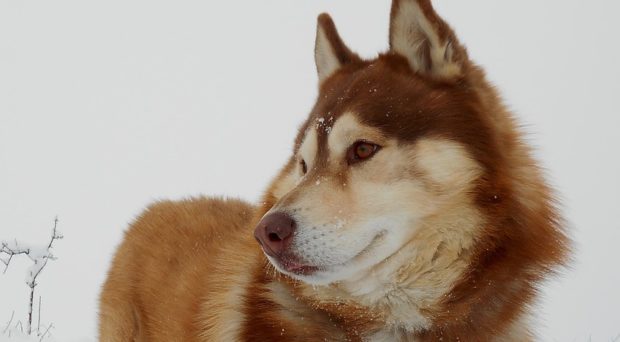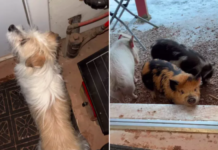Last Updated on March 6, 2024 by Fumipets
A Siberian husky is eager to run and play in the snow, while most of us would be dreaming of a nice fire and a warm cup of hot chocolate. He is unaffected by the cold because he boasts of two thick coats of fur instead of just one.

Double Coat
A Siberian husky has a double coat because it was bred to operate in tough circumstances. Unlike single-coated dogs, huskies have two layers of fur: a top coat and an undercoat. Each one plays a critical role in protecting the dog’s skin and keeping him cool or warm as required. If a Siberian husky has just one coat, he has either lost his fluffy undercoat or is not a genuine husky.

Top Coat
Long, thick guard hairs make up the top coat, providing protection for the coat and skin. The top coat repels water, retains heat in cold weather while allowing the skin to breathe in hot weather, and protects the skin from damaging UV rays. The hairs on the top coat are straight, not curled or crimped, and they shed year-round.

Undercoat
The undercoat is a fluffy, downy covering that protects you from the cold. To assist trap warm air, these tiny hairs are typically somewhat crimped. The undercoat is rich and thick. The undercoats of Siberian huskies are shed twice a year, typically in the spring and autumn. Over the course of two to three weeks, the undercoat sheds in clumps and pieces. The undercoat is typically sparse or nonexistent during the hot summer months, and thick and fluffy during the winter months.

Wooly Coat
A woolly coat may be seen on certain Siberian huskies. This is still a double coat, but with longer guard hairs than normal. This coat may appeal to owners who like long-haired dogs, but it is unsuitable for a working Siberian husky. Water, ice, and frost are not well protected by the long, delicate guard hairs. In addition, the coat takes longer to dry, which may be dangerous in cold weather.
https://www.youtube.com/watch?v=XItbebS3fcc


















